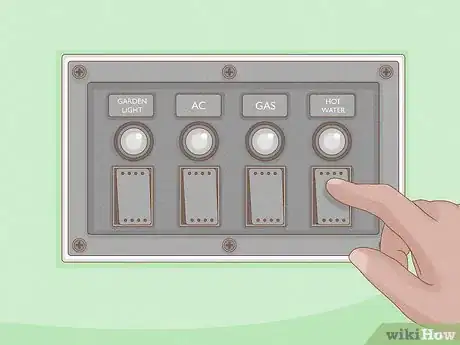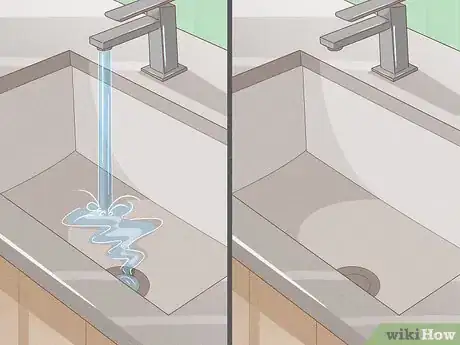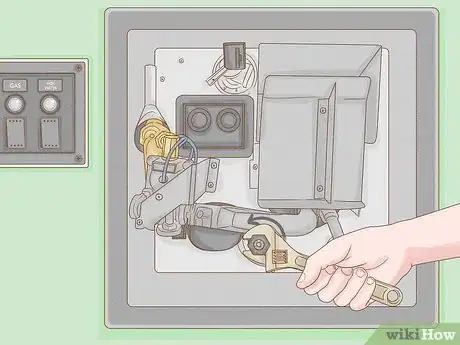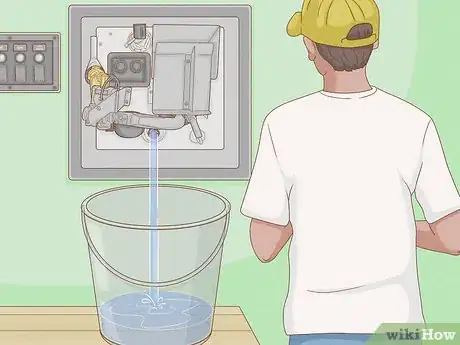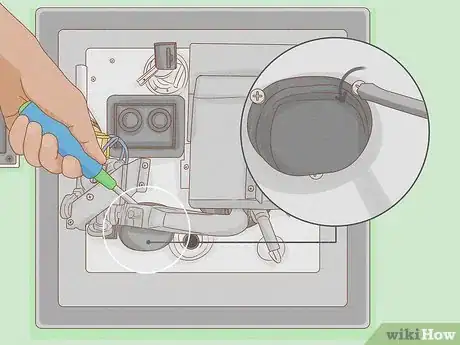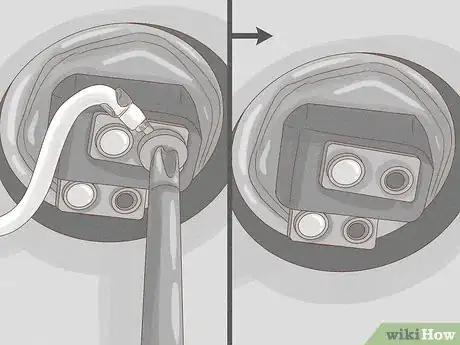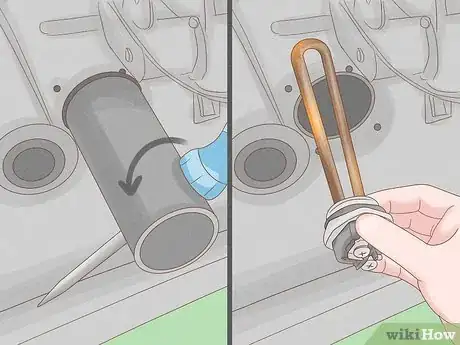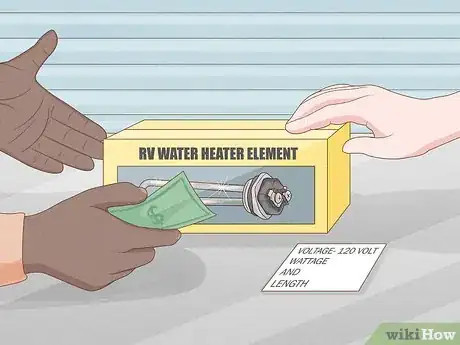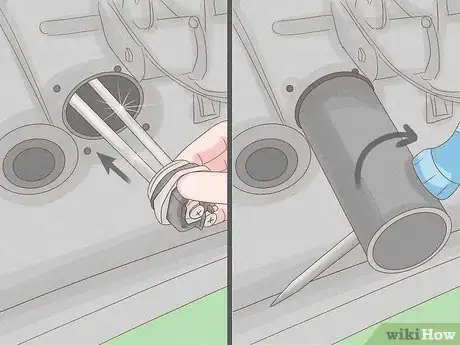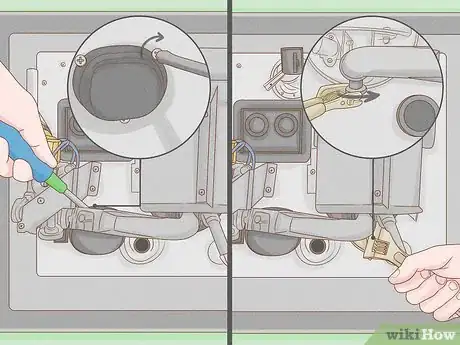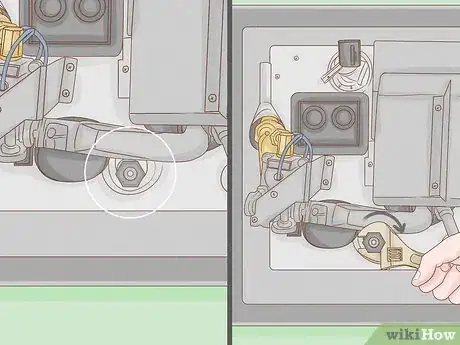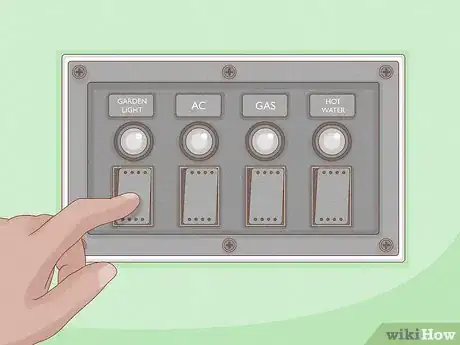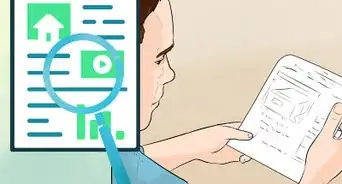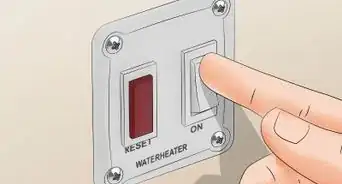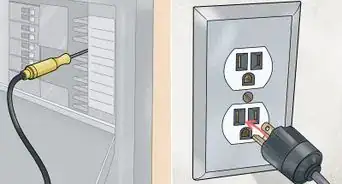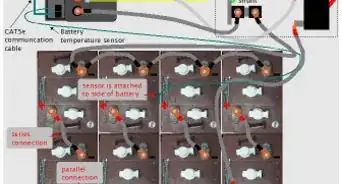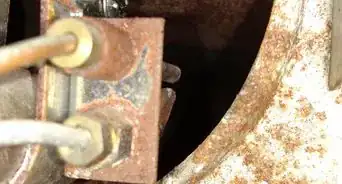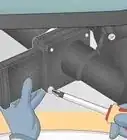This article was co-authored by wikiHow Staff. Our trained team of editors and researchers validate articles for accuracy and comprehensiveness. wikiHow's Content Management Team carefully monitors the work from our editorial staff to ensure that each article is backed by trusted research and meets our high quality standards.
There are 11 references cited in this article, which can be found at the bottom of the page.
This article has been viewed 15,180 times.
Learn more...
Replacing your RV water heater’s electric heating element is one of the easiest ways you can improve its performance. Over time, old elements can accumulate mineral deposits from the water in the tank or just wear out from use. This can cause your element to stop heating your water as efficiently as when it was new or to stop working altogether. Fortunately, replacing an electric RV heating element is pretty cheap and simple to do, since most elements just screw in and out of the water tank. If you notice your water heater just isn’t heating up like it used to, go ahead and try replacing the element to fix it.
Steps
Draining the Water Tank
-
1Disconnect the water heater from all power sources and water supplies. Go to your RV’s electrical switch panels and turn off the gas and electrical power switches for your hot water tank. Turn off the water pump and turn off the water supply if you’re connected to an external supply, such as a city water supply. Unplug your RV’s external electrical supply if it’s plugged in.[1]
- This will eliminate the risk of any kind of electrical shock when you’re draining the tank and prevent it from heating up while you’re working.
- This process applies to almost all common RV water heaters that use an electric heating element, which look basically the same across different makes and models. However, if your water heater looks different, consult your owner’s manual to understand where things are and what the process is for changing the element.
-
2Open your RV’s kitchen hot water faucet to relieve pressure in the tank. Go into your RV’s kitchen and open up the hot water faucet all the way. Leave it open for 10 seconds or so to ensure there is no pressure remaining in the hot water tank.[2]
- This will prevent you from getting sprayed with pressurized water when you drain the tank.
- Note that no water should come out of the faucet. If water is coming out, double-check that you turned off the water pump and water supply.
Advertisement -
3Remove the tank’s anode rod and drain plug cap combo with a socket wrench. Go outside to the water heater access panel on the side of your RV and remove the cover. Insert the end of a socket wrench over the drain plug cap, which is attached to the anode rod, in the center of the bottom of the water heater tank. Loosen it until you can pull the anode out, then remove it and set it aside.[3]
- An anode rod is a rod made of certain metals like magnesium, zinc, or aluminum. It helps protect the metal lining inside your hot water tank and prevent corrosion.
- The water will start draining out of the tank as soon as you undo the cap and pull the rod out.
- If the anode rod looks deteriorated or has an unpleasant odor, replace it with a new one after you replace the water heater element.
-
4Wait for all the water to drain out of the tank. Step back from the hot water tank and let the water spill out. Wait until it stops dripping completely to proceed with replacing the heating element.[4]
- If you want to direct the water away from your RV, you can hook a hose up to the drain hole. Otherwise, just let it spill out onto the ground.
- If your hot water tank was on recently, the water could still be hot. This is why it’s a good idea to step back while the water drains out to avoid getting splashed when it hits the ground.
Removing the Old Element
-
1Take off the gas supply manifold and burner assembly tubing. These are the curved sections of tubing running into the hot water tank just above the drain plug. Use a wrench to loosen and remove the retainer nut holding the thin silver gas supply manifold in place at the left-hand side of the tubing and the nut holding the burner assembly tubing in place in the U-shaped bracket at the right-hand side of the tubing. Carefully pull the assembly away and set it aside.[5]
- Be careful not to lose the nuts. You can screw them loosely back into place on the assembly so they don’t accidentally go missing.
- You have to remove this tubing to access the heating element cover.
-
2Remove the screws from the heating element cover and take it off. The water heater element cover is an oval-shaped cap just to the left of the water tank’s drain hole. Use a flathead screwdriver or a socket wrench to loosen and remove the screws holding the cover in place, then lift it off and set it aside.[6]
- Once you remove this cover, you’ll see the backside of the heating element itself.
-
3Unscrew the wiring from the heater element with a Phillips-head screwdriver. Loosen the Phillips screws that are attaching the wires to the backside of the heating element. Slide the clips at the ends of the wires off of the screws.[7]
- There are 2 electrical wires: a black wire and a white wire.
-
4Use a hot water heater element wrench to unscrew the element and pull it out. Place the hex-shaped end of the element wrench over the hex-shaped backside of the element. Insert a screwdriver through the 2 holes on the opposite end of the wrench and use it as a handle to twist the wrench counterclockwise. Pull the heating element out when you loosen it all the way.[8]
- Hot water heater element wrenches fit all standard screw-in RV water heater elements. They cost under $10 USD.
- If you don’t have the correct wrench, you could try using a large socket wrench or another type of wrench to unscrew the element.
Installing the New Element
-
1Buy a replacement screw-in RV water heater element with the same voltage. RV water heater elements are generally a standard size that fit into different makes and models of water heaters, but double-check your RV water heater’s voltage, wattage, and length in your owner’s manual to make sure you buy an element that matches. Purchase your new element online or at an RV supply store.[9]
- Most RVs use a 120-volt water heater, so you probably just need a 120-volt element.
- A new heater element will only cost you around $10 to $20 USD.
-
2Screw the new element into place with your hot water heater element wrench. Slide your new heater element into the hole that you pulled the old one out of. Put the hex-shaped side of the element wrench over the backside of the new element, insert a screwdriver through the 2 holes in the other side of the wrench, and turn it clockwise until the element is screwed in all the way.[10]
- If you want to ensure a really good seal, apply a coat of plumber’s grease to the gasket, or the rubber ring, on the new heating element before you screw it in.[11]
-
3Attach the electrical wires to the screws on the backside of the element. Slide the clips on the wires back over the Phillips screws on the element. Use your Phillips-head screwdriver to tighten the screws all the way and secure them in place.[12]
- It doesn’t matter which color of wire attaches to which screw. Just attach each wire to the closest screw.
-
4Replace the element cover and the gas supply manifold and burner assembly. Put the oval-shaped element cover back on top of the backside of the element, insert the screws that hold it in place, then tighten them using your flathead screwdriver or socket wrench. Set the gas supply manifold and burner assembly tubing back in place and tighten the retaining nuts to fasten it in place.[13]
- Remember that the thicker brass part of the tubing sits in the U-shaped bracket to the right, just above the water tank drain hole. The thinner silver part of the tubing attaches to the underside of the gas supply mechanism on the left-hand side.
-
5Put the anode rod back in and tighten the drain cap using a socket wrench. Reinsert the anode rod attached to the drain plug cap back into the drain hole. Use your socket wrench to turn it all the way clockwise to secure it in place. Stop turning when it is hand-tight and don’t force it any tighter, or it may be hard to remove the next time you want to. [14]
- You can also put plumber’s tape around the threads of the drain plug cap for a tighter seal if you want.
-
6Turn on the gas, electricity, water pump, and water supply and test the heater. Go back inside your RV to the electrical switch panels and turn on the gas and electrical supply switches for your hot water tank. Turn the water pump and water supply back on and plug your RV’s external electrical supply back on. Open the hot water faucet in the kitchen and let it run until hot water comes out.[15]
- The faucet will sputter at first for a few minutes while the tank refills itself.
Warnings
- Make sure you always completely finish the process of replacing your hot water tank’s heating element before you reconnect it to gas, power, and water supplies to avoid potential accidents and injury.⧼thumbs_response⧽
Things You’ll Need
- Socket wrench
- Wrench
- Flathead screwdriver
- Phillips-head screwdriver
- Hot water heater element wrench
References
- ↑ https://www.youtube.com/watch?v=wBwrOO1h_E0&feature=youtu.be&t=10
- ↑ https://www.youtube.com/watch?v=wBwrOO1h_E0&feature=youtu.be&t=45
- ↑ https://www.youtube.com/watch?v=r4qAXvFvN6A&feature=youtu.be&t=110
- ↑ https://liveworkdream.com/2020/02/26/fix-rv-water-heater-electric/
- ↑ https://liveworkdream.com/2020/02/26/fix-rv-water-heater-electric/
- ↑ https://liveworkdream.com/2020/02/26/fix-rv-water-heater-electric/
- ↑ https://liveworkdream.com/2020/02/26/fix-rv-water-heater-electric/
- ↑ https://www.youtube.com/watch?v=r4qAXvFvN6A&feature=youtu.be&t=330
- ↑ https://inspectapedia.com/plumbing/Electric_Water_Heater_Element_Replacement.php
- ↑ https://www.youtube.com/watch?v=wBwrOO1h_E0&feature=youtu.be&t=350
- ↑ https://manuals.heartlandowners.org/manuals/Troubleshooting%20Guides%20and%20Tips/Water%20Heater%20Troubleshooting%20-%20Suburban%20V1.3.pdf
- ↑ https://www.youtube.com/watch?v=r4qAXvFvN6A&feature=youtu.be&t=435
- ↑ https://liveworkdream.com/2020/02/26/fix-rv-water-heater-electric/
- ↑ https://liveworkdream.com/2020/02/26/fix-rv-water-heater-electric/
- ↑ https://www.youtube.com/watch?v=r4qAXvFvN6A&feature=youtu.be&t=474
- ↑ https://rvshare.com/blog/rv-water-heater/
- ↑ https://rvshare.com/blog/rv-water-heater/
